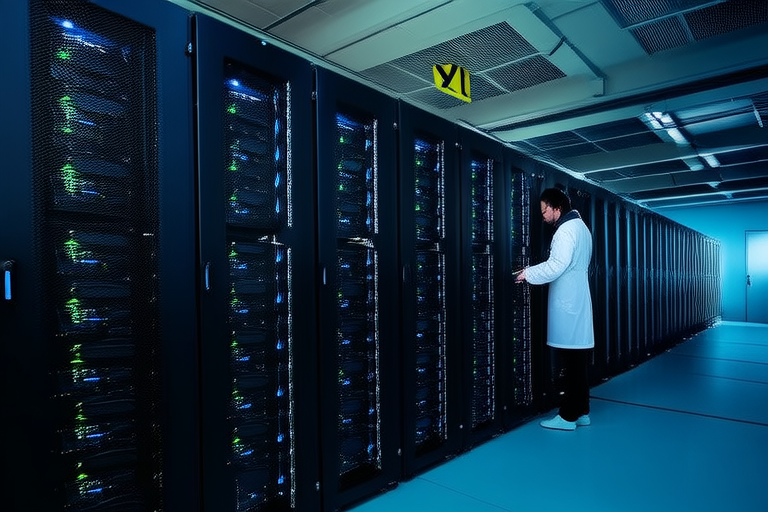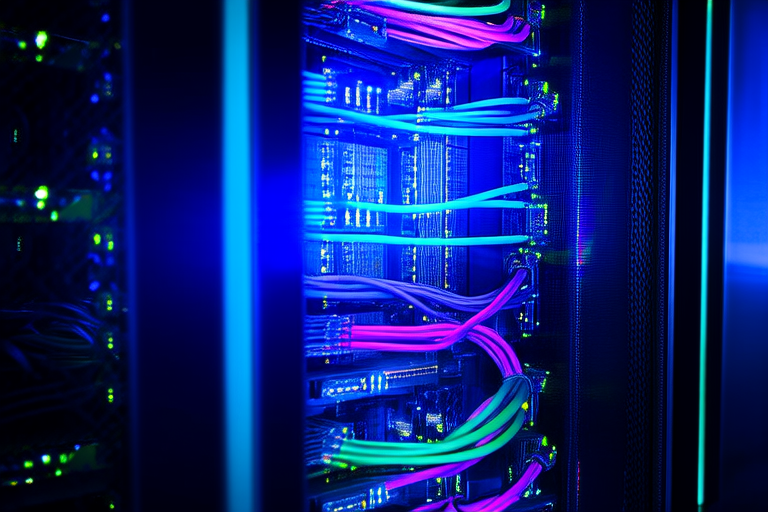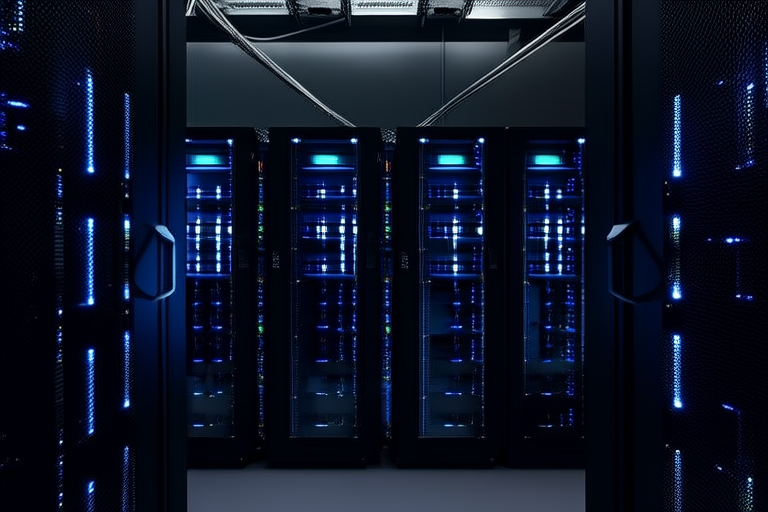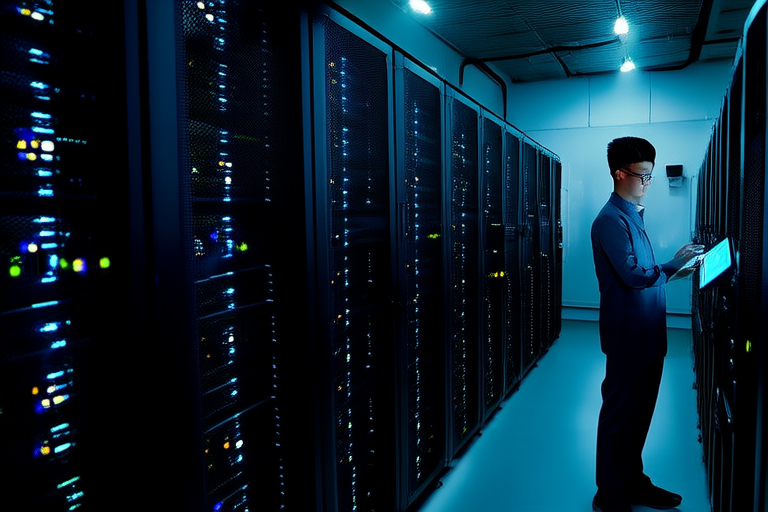“`html
Edge Computing Emerges: Challenging Traditional Cloud Computing Models
Introduction
In recent years, the rise of edge computing has marked a significant shift in the way we approach data processing and storage. As the world becomes more interconnected through the Internet of Things (IoT), the need for efficient and timely data analysis has grown exponentially. Traditional cloud computing models, while powerful, face several limitations that hinder their effectiveness in certain scenarios. Latency, bandwidth constraints, and security concerns often pose challenges, particularly for real-time applications and IoT devices.
Edge computing addresses these challenges by bringing computation closer to the source of data generation. By processing data at the edge of the network, rather than relying solely on centralized cloud servers, edge computing reduces the time it takes for data to travel back and forth, thereby improving response times and overall efficiency. This shift is not just about optimizing performance; it’s about enabling new possibilities in industries ranging from healthcare to autonomous vehicles. In this article, we will delve into the concept of edge computing, its advantages over traditional cloud computing, and its impact on the future of technology.
What is Edge Computing?
Edge computing refers to a distributed computing paradigm that processes data near the source of data generation, rather than sending all data to a central server. Unlike traditional cloud computing, which relies on remote data centers located far from end-users, edge computing involves deploying small, lightweight devices known as edge nodes or edge servers. These devices are strategically placed close to the end-user or data source, allowing for faster data processing and reduced latency.
The architecture of an edge computing system typically includes three key components: edge devices, gateways, and data centers. Edge devices are the endpoints where data is generated, such as sensors, cameras, or IoT devices. Gateways serve as intermediaries, collecting data from edge devices and forwarding it to the nearest edge node or cloud server. Data centers, which may be local or regional, handle more complex computations and long-term data storage. Together, these components form a decentralized network that can process and analyze data in real-time, providing immediate insights and actions.
One of the primary distinctions between edge computing and traditional cloud computing lies in their proximity to the data source. While cloud computing centralizes data processing in remote data centers, edge computing brings computation closer to the user or device, reducing the distance data must travel. This proximity not only improves latency but also enhances data privacy and security by minimizing the amount of sensitive data transmitted over public networks.
Challenges of Traditional Cloud Computing
Traditional cloud computing models have been instrumental in transforming the way businesses operate, offering scalable infrastructure, robust security, and easy access to computing resources. However, they also come with inherent limitations, particularly when it comes to latency, bandwidth, and security. For applications that require real-time processing, such as autonomous vehicles, telemedicine, and industrial automation, these limitations can be significant barriers.
Latency, or the delay in transmitting data between devices, is one of the most pressing challenges facing cloud computing. In many real-time applications, even milliseconds of delay can result in suboptimal performance or safety risks. For example, in autonomous driving, delays in receiving and processing sensor data could lead to accidents. Similarly, in telemedicine, real-time video streaming requires low-latency connections to ensure smooth communication between doctors and patients.
Bandwidth constraints further exacerbate the issue of latency. Many IoT devices generate large volumes of data, which can overwhelm network infrastructure if sent directly to the cloud. This not only increases costs but also places additional strain on network resources. Moreover, the reliance on public networks for data transmission introduces security risks, making it easier for malicious actors to intercept sensitive information.
These challenges highlight the limitations of traditional cloud computing in handling latency-sensitive applications. By contrast, edge computing offers a solution that addresses these issues head-on, enabling real-time data processing and analysis at the edge of the network.
Advantages of Edge Computing
Edge computing offers several compelling advantages over traditional cloud computing, particularly in terms of performance, security, and cost-effectiveness. One of the most significant benefits is the reduction in latency. By processing data locally, edge computing eliminates the need for data to travel long distances to remote servers, significantly improving response times. This is particularly important for applications that require real-time decision-making, such as autonomous vehicles, smart cities, and industrial automation.
Another advantage of edge computing is its ability to improve data processing speed. With edge devices capable of performing complex computations on-site, there is less reliance on centralized cloud servers. This not only reduces the load on cloud infrastructure but also enables faster and more efficient data analysis. For example, in a smart factory, edge computing can enable real-time monitoring and control of production lines, leading to increased productivity and reduced downtime.
Security is another area where edge computing excels. By processing data locally, edge computing minimizes the amount of sensitive information that needs to be transmitted over public networks, reducing the risk of data breaches. Additionally, edge devices can implement advanced encryption and authentication protocols, ensuring that only authorized users and devices have access to critical data. This is especially important in industries like healthcare and finance, where data privacy and security are paramount.
Cost savings is yet another benefit of edge computing. By reducing the amount of data that needs to be transmitted to the cloud, edge computing can lower bandwidth and storage costs. Moreover, the decentralized nature of edge computing allows organizations to leverage existing infrastructure, such as local data centers or private networks, further reducing expenses. For instance, in the oil and gas industry, edge computing can enable real-time monitoring of equipment and pipelines, reducing maintenance costs and preventing costly downtime.
Impact on Cloud Computing
The rise of edge computing is reshaping the landscape of cloud computing, creating both opportunities and challenges for cloud providers. Rather than viewing edge computing as a threat, many cloud companies are embracing it as a complementary technology that can enhance their offerings. The synergy between edge and cloud computing lies in their ability to work together, with edge computing handling real-time data processing and cloud computing managing more complex tasks and long-term data storage.
Hybrid models that combine edge and cloud computing are becoming increasingly popular, allowing organizations to take advantage of the strengths of both paradigms. In these models, edge devices perform initial data processing and filtering, reducing the volume of data that needs to be sent to the cloud. The cloud then handles more complex analytics and long-term storage, providing a scalable and flexible solution for managing large volumes of data. This approach not only improves performance but also reduces costs by optimizing resource usage.
The evolution of cloud services in response to edge computing is evident in the development of new tools and platforms designed to support edge deployments. Cloud providers are offering edge-specific services, such as edge management platforms and edge analytics tools, enabling customers to easily deploy and manage edge infrastructure. Additionally, cloud providers are working to improve the integration between edge and cloud environments, ensuring seamless data flow and collaboration between the two.
As edge computing continues to gain traction, cloud providers are also investing in research and development to address the unique challenges posed by edge deployments. This includes developing more efficient algorithms for edge processing, improving network connectivity, and enhancing security measures. By staying ahead of these developments, cloud providers can ensure that their offerings remain relevant and competitive in the rapidly evolving technology landscape.
Future Trends and Challenges
The future of edge computing holds great promise, with advancements in edge hardware, software, and network technologies expected to drive further innovation. One of the key areas of focus will be the development of more powerful and energy-efficient edge devices. As edge computing becomes more prevalent, there will be increasing demand for devices that can handle complex computations while consuming minimal power. This will be particularly important for battery-powered IoT devices and mobile applications.
Software advancements will also play a crucial role in shaping the future of edge computing. The development of edge-native operating systems and middleware will enable more efficient and secure data processing at the edge. Additionally, the growth of edge AI and machine learning will allow edge devices to perform more sophisticated analyses, enabling real-time decision-making and predictive maintenance. For example, in smart agriculture, edge AI can enable real-time monitoring of crop health and environmental conditions, helping farmers optimize yields and reduce waste.
Network technologies will also continue to evolve, supporting the growing demands of edge computing. The deployment of 5G networks, with their high-speed and low-latency capabilities, will enable faster and more reliable data transmission between edge devices and cloud servers. Furthermore, the development of edge-to-edge networking solutions will facilitate direct communication between edge devices, reducing the need for cloud intermediation.
However, the adoption of edge computing also presents several challenges that must be addressed. Interoperability remains a key issue, as different edge devices and platforms may use incompatible protocols and standards. Standardization efforts are underway to establish common frameworks and interfaces, ensuring seamless integration between edge and cloud environments. Scalability is another challenge, as the number of edge devices and the volume of data they generate continue to grow. Cloud providers and edge vendors will need to develop solutions that can handle large-scale deployments while maintaining performance and security.
Conclusion
In conclusion, edge computing represents a transformative shift in the way we approach data processing and storage. By bringing computation closer to the source of data generation, edge computing addresses the limitations of traditional cloud computing models, offering reduced latency, improved data processing speed, enhanced security, and cost savings. As edge computing continues to evolve, it will play an increasingly important role in enabling real-time applications and driving innovation across various industries.
The future of edge computing looks promising, with advancements in hardware, software, and network technologies expected to further enhance its capabilities. However, challenges such as interoperability, standardization, and scalability must be addressed to ensure widespread adoption. As edge and cloud computing continue to converge, we can expect to see more innovative solutions that leverage the strengths of both paradigms, paving the way for a more connected and intelligent future.
“`




